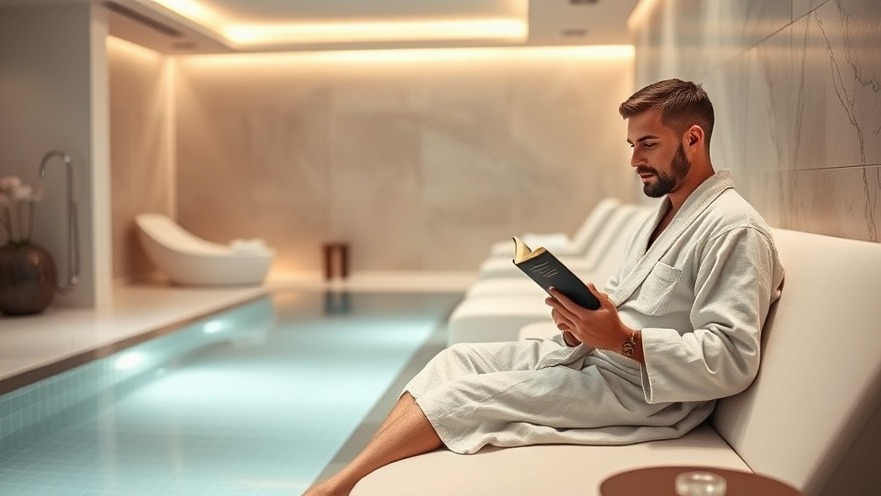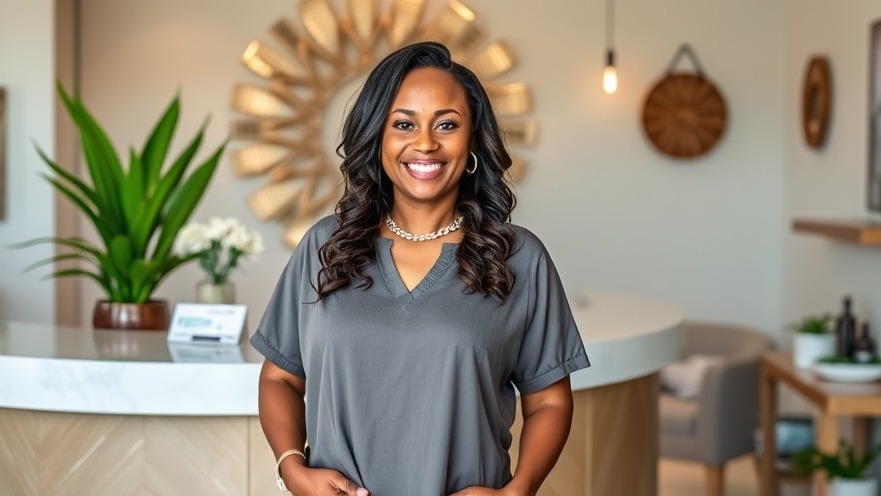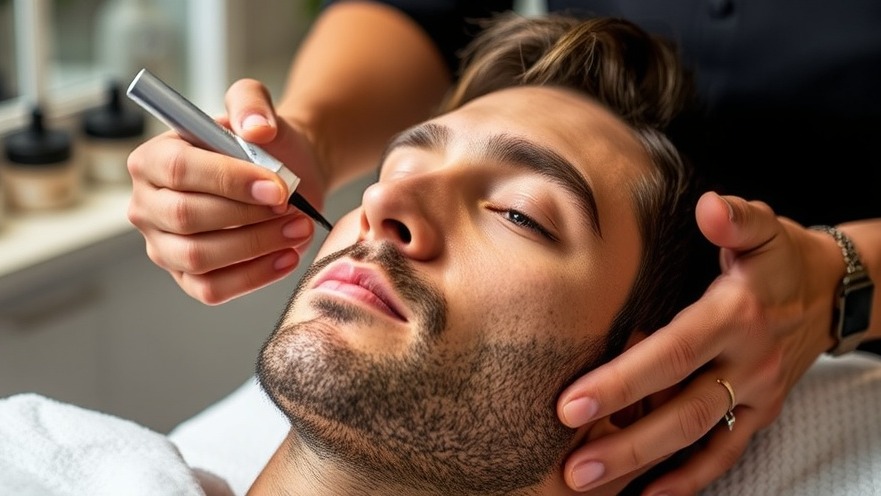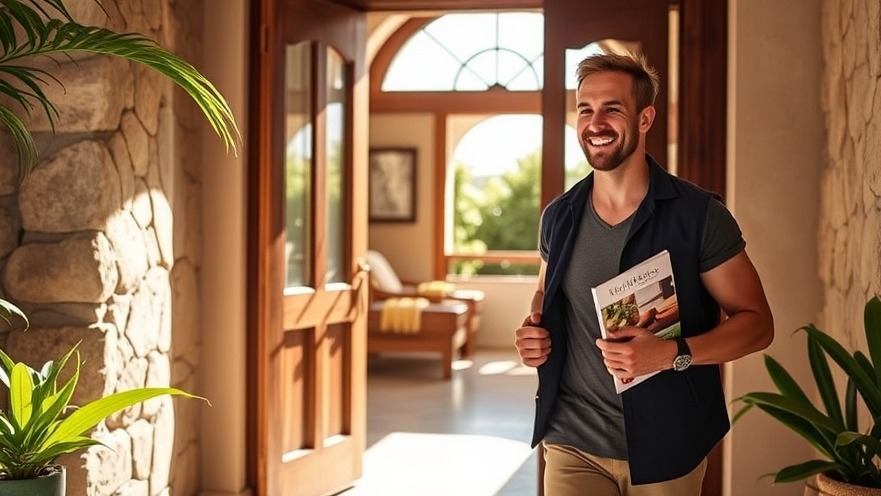
Introduction: From Taboo to Transformation — Why Men Are Finally Claiming Their Space in the Spa
For decades, the spa world was painted in shades of blush and lavender — a domain of pampering that, whether by design or default, seemed to whisper, “This isn’t for you” to men. But all of that is changing.
Today, more men than ever are stepping into spa spaces — not to tag along with their partners, but to recover, recharge, and reconnect with themselves. According to Spabreaks.com, bookings by male clients have jumped a staggering 346% since 2018, with men now making up nearly 40% of spa-goers. And the shift isn’t just in numbers — it’s in mindset.
“Men feel pressure to push through when they’re struggling,” says Abi Selby, founder of Spabreaks.com. “But taking time to relax can make a huge difference.”
Leading the charge is spa owner Delicia Burris, whose Glorious Touch Health and Wellness Spa has become a haven for men who once saw self-care as something “not for them.” She’s rebranded services with terms like “foot restoration” instead of pedicure, and created environments that feel masculine, restorative, and above all — inviting.
“The spa is not a luxury,” Delicia says with conviction. “It’s a must for stress relief and self-check-in.”
What’s behind this surge in men’s spa interest? A perfect storm of stress, shifting gender norms, and a growing understanding that self-care isn’t self-indulgent — it’s strategic. In this article, we’ll explore how spa owners like Delicia are redefining the male wellness experience, and what every spa leader can learn from the men walking through their doors.
Because the truth is: wellness doesn’t have a gender. And the future of your spa might just be wearing aftershave.

Business Owner Spotlight: Delicia Burris of Glorious Touch Spa
Delicia Burris didn’t set out to revolutionize men’s wellness. She set out to care for people — and along the way, she noticed a gap.
As the founder and CEO of Glorious Touch Health and Wellness Spa, Delicia’s inspiration was deeply personal. She cared for both her father and grandfather through illness, witnessing firsthand the consequences of neglecting self-care. One lived to 69, the other to 90. The difference? Preventive health.
“My dad didn’t take care of himself, and I saw the toll it took,” she says. “That stuck with me. I wanted to create a place where men could start taking care of themselves before it’s too late.”
In a culture where spa visits were often dismissed as “not manly,” Delicia did something radical — she met men where they were. She changed the language. “Pedicure” became “foot restoration.” Treatments were rebranded as performance enhancers, not pampering.
The result? A quiet revolution, one client at a time.
Turning Point: When Men Began Showing Up
The real change came during Men’s Health Month, when Delicia launched a special campaign encouraging men to book appointments. She didn’t just market the treatments — she told stories, shared her “why,” and spoke openly about male stress, diabetes, and neglected self-care.
The response was overwhelming.
“They started coming in — not just for a massage, but to ask questions, to talk about their aches, their family history,” she recalls. “Some even brought friends.”
This wasn’t just a demographic trend. It was a cultural reset. Men, especially those in high-stress jobs or managing chronic health conditions, were finally seeing spas not as indulgent escapes, but as necessary investments in their well-being.
And it wasn’t just Glorious Touch. Spabreaks.com reported a 65% increase in spa voucher conversion among men and a 73% rise in revenue during their “Real Men Relax” campaign.
The message was clear: when you make it safe and relevant, men show up.

Innovative Practices that Redefined the Experience
Delicia and other forward-thinking spa owners didn’t stop at renaming services. They reimagined the entire experience:
Treatment personalization: Men’s facials that address shaving irritation, thicker skin, and oil production.
Foot health awareness: Education around fungal infections, brittle nails, and diabetic symptoms.
Massage with purpose: Deep tissue sessions framed as recovery tools, not relaxation indulgences.
Masculine design elements: Earthy tones, minimalist branding, and sports media in lounge spaces.
“We use language and visuals that make men feel seen,” said Garrett Mersberger, Chair of the International Spa Association. “It’s not about luxury—it’s about performance, recovery, and longevity.”
Delicia adds, “Men may not always ask questions upfront, but when you create an environment of education and trust, they open up.”
The growing use of touchless wellness tools — like infrared saunas, cryotherapy, and VR-enhanced meditation — is another innovation helping men feel more in control of their spa experience.
Differentiators: What Sets the Trend Leaders Apart
What separates a male-friendly spa from a truly male-welcoming one?
Leaders in the space understand that it’s not just about offering beard oil or muscle balms — it’s about shifting the narrative.
Jo Malone London, for example, made headlines by partnering with NFL stars for their Super Bowl campaign. Athletes like JuJu Smith-Schuster and Kyle Juszczyk showcased their personal rituals, positioning self-care as part of elite performance.
“Instead of trading Pokémon cards, today’s guys are trading fragrance tips and recovery routines,” said Melanie Canty, global director at Jo Malone.
Spa professionals are also leaning into functional wellness — focusing on what clients gain from their sessions: reduced cortisol, improved sleep, better focus, and faster recovery.

Actionable Insights for Spa Owners
Here’s what spa owners and managers can take away — and act on — immediately:
Rebrand your language. Use functional, benefit-driven service names that appeal to male priorities.
Train your team to understand men’s health needs: skin care, stress behaviors, and recovery concerns.
Adjust your environment. Masculine design choices, entertainment options, and scent profiles go a long way.
Time your promotions. Men’s Health Month, Father’s Day, and seasonal resets are ideal launch points.
Offer bundled services and bring-a-friend specials to lower the social barrier for first-timers.
“When a man feels ownership of his health, he doesn’t just come back — he brings friends,” says Delicia Burris.
Conclusion: Wellness Without Gender Limits
The world of wellness is evolving — and with it, the spa industry. No longer just a sanctuary of scented candles and soft music, spas are becoming strategic wellness hubs for recovery, resilience, and longevity.
The men walking through your doors today are not the men of yesterday. They are CEOs. Teachers. Fathers. Fitness junkies. Veterans. And they are ready for a space that meets their needs without judgment or assumption.
“The biggest wellness trend for 2025 isn’t just biohacking,” says a Global Wellness Institute forecast. “It’s inclusivity.”
So the question isn’t whether your spa should cater to men.
It’s how soon you’re going to lead the way.

Final Takeaways for Spa Owners and Managers
Drop the outdated labels — self-care is not feminine. It’s functional.
Speak their language — swap “pampering” for “performance” and “beauty” for “recovery.”
Make space for them — from decor to treatment names, let your spa reflect that men are welcome and expected.
Educate and elevate — show your male clients the why behind each service, especially around foot health, skin care, and stress management.
Tell stories, not just features — just like Delicia Burris, share personal reasons behind your spa mission. Real stories build trust.
Ready to take the next step?
If you’re a spa owner looking to evolve your services and space for today’s modern man, look to leaders like Delicia Burris at Glorious Touch Health and Wellness Spa for inspiration. Her approach proves that inclusivity isn’t just good business — it’s a powerful way to improve lives.
Whether you’re redesigning your service menu or launching a men’s wellness campaign for the first time, the opportunity is wide open.
And the men? They’re already on their way.
 Add Row
Add Row  Add
Add 

 Add Row
Add Row  Add
Add
Write A Comment